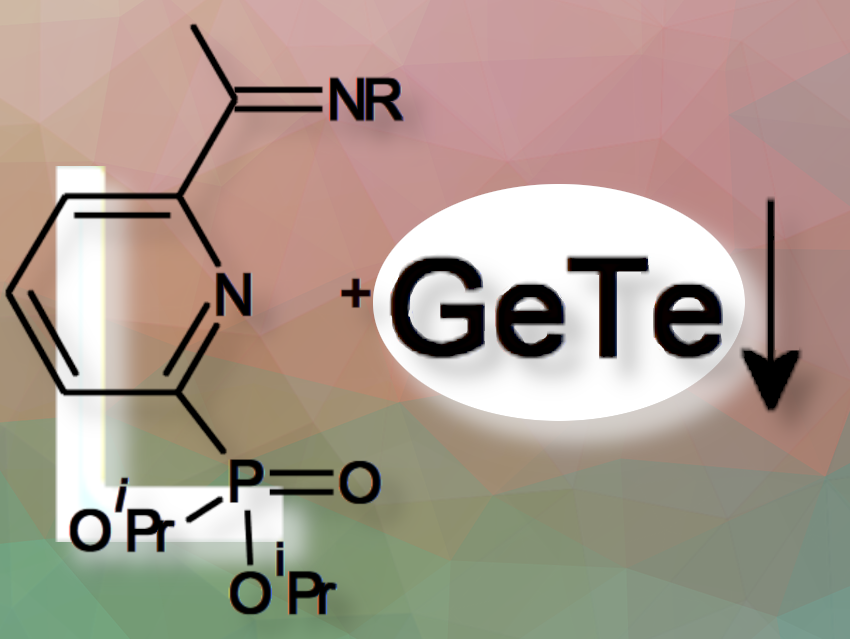Petr Nemec, Univerzita Pardubice Fakulta Chemicko-Technologická, Pardubice, Czech Republic, and colleagues have developed a low-temperature method for synthesizing GeTe nanoparticles using a novel organometallic precursor and the common organic solvents THF. Unlike traditional high-temperature approaches, this method operates significantly below the crystallization temperature, making it a cost-effective alternative for producing size-controlled amorphous GeTe nanomaterials.
The team synthesized the GeTe nanoparticles by first preparing a germanium precursor ([LGeCl][OTf]) through the reaction of a germanium dichloride dioxane complex with a ligand in dichloromethane (CH2Cl2), followed by silver triflate addition. This precursor was then reacted with lithium telluride, generated in situ by reacting tellurium powder with lithium triethyl borohydride in THF. This led to the formation of GeTe nanoparticles.
The N,N-chelating ligand L ({2-[(Me)C=N(C6H3-2,6-iPr2)]-6-[(iPrO)2P=O]C5H3N}[) was used to stabilize the initial ionic Ge-based complex [LGeCl]+[OTf]–. The team found that modifying reaction conditions such as temperature and sonication allows precise tuning of nanoparticle size.
Characterization of the GeTe nanoparticles was done using techniques like X-ray diffraction (XRD), transmission electron microscopy (TEM), scanning electron microscopy (SEM), laser ablation time-of-flight mass spectrometry (LA-TOF-MS), Raman scattering spectroscopy, and dynamic light scattering (DLS). Results confirmed that the synthesized nanoparticles are amorphous, with isometric, rounded particles averaging 20 nm in size, and have a near-stoichiometric composition of Ge48Te52.
This low-temperature synthetic method offers a versatile and efficient approach for producing amorphous chalcogenide nanoparticles. The stabilizing neutral ligand can be recovered and reused after the reaction and used for further reactions. The process enables easy integration of GeTe nanoparticles into different substrates.
According to the researchers, future work aims to explore applications such as thin-film deposition for thermoelectric measurements and other uses.
- Low-Temperature Synthesis Of GeTe Nanoparticles,
Marek Bouška, Yaraslava Milasheuskaya, Miroslav Šlouf, Petr Knotek, Stanislav Pechev, Lubomír Prokeš, Lukáš Pečinka, Josef Havel, Miroslav Novák, Roman Jambor, Petr Nemec,
Chem. Eur. J. 2024.
https://doi.org/10.1002/chem.202402319




